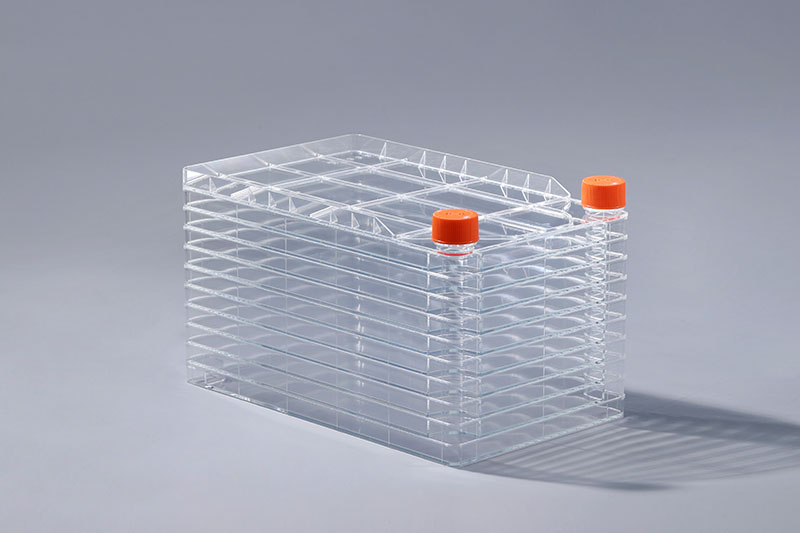представляет собой многослойный расходный материал для клеточных культур, который в основном используется в промышленном массовом производстве, лабораторных операциях и крупномасштабных клеточных культурах и является идеальным выбором для прикрепленных клеток. При выборе этого типа расходных материалов мы будем обращать внимание на ключевой фактор, а именно на обработку поверхности TC, почему она должна проходить эту специальную обработку? Cells можно разделить на два типа: адгезионные клеток и суспензионных клеток в соответствии с различными методами выращивания. Суспензионные клетки не нужно прикреплять к подложке для роста, и они могут расти в суспензии в культуральной среде. Адгезивные клетки должны иметь поверхность роста, к которой они могут прикрепляться для роста, и только гидрофильная твердая поверхность может позволить клеткам прикрепляться. прозрачное полистироловое (ПС) сырье. Как полимерный материал полистирол обладает хорошей прочностью и пластичностью, не токсичен и стал предпочтительным материалом для одноразовых расходных материалов для культивирования клеток. Однако поверхность ПС гидрофобна, что само по себе не способствует росту адгезивных клеток. Чтобы улучшить адгезию клеток, необходимо пройти обработку модификации поверхности и ввести гидрофильные группы, чтобы позволить клеткам лучше расти. рост прилипших клеток. Расходные материалы, используемые для культивирования суспензионных клеток, не обязательно требуют таких специально обработанных сосудов, но расходные материалы после обработки поверхности TC обычно также подходят для культивирования суспензионных клеток.cell factory
Cells can be divided into two types: adherent cells and suspension cells according to different growth methods. Suspension cells do not need to be attached to a support to grow, and can grow in suspension in a culture medium. Adherent cells must have a growth surface to which they can attach to grow, and only a hydrophilic solid interface can allow cells to attach.
The cell factory is mainly used for the culture of adherent cells, which is processed by injection molding of transparent polystyrene (PS) raw materials. As a polymer material, PS has good strength and plasticity, and has no toxicity, and has become the preferred material for disposable cell culture consumables. However, the surface of PS is hydrophobic, which itself is not conducive to the growth of adherent cells. In order to enhance the adherence performance of cells, it is necessary to undergo surface modification treatment and introduce hydrophilic groups to allow cells to grow better.
In summary, the purpose of TC treatment on the cell factory surface is to adapt to the growth of adherent cells. The consumables used for suspension cell culture do not necessarily require such specially treated vessels, but the consumables after surface TC treatment are generally also suitable for the culture of suspension cells.
The FAI climbed 5.9 percent year-on-year in the first 11 months of 2018, quickening from the 5.7-percent growth in Jan-Oct, the National Bureau of Statistics (NBS) said Friday in an online statement.
The key indicator of investment, dubbed a major growth driver, hit the bottom in August and has since started to rebound steadily.
In the face of emerging economic challenges home and abroad, China has stepped up efforts to stabilize investment, in particular rolling out measures to motivate private investors and channel funds into infrastructure.
Friday's data showed private investment, accounting for more than 60 percent of the total FAI, expanded by a brisk 8.7 percent.
NBS spokesperson Mao Shengyong said funds into weak economic links registered rapid increases as investment in environmental protection and agriculture jumped 42 percent and 12.5 percent respectively, much faster than the average.
In breakdown, investment in high-tech and equipment manufacturing remained vigorous with 16.1-percent and 11.6-percent increases respectively in the first 11 months. Infrastructure investment gained 3.7 percent, staying flat. Investment in property development rose 9.7 percent, also unchanged.
 English
English



















































